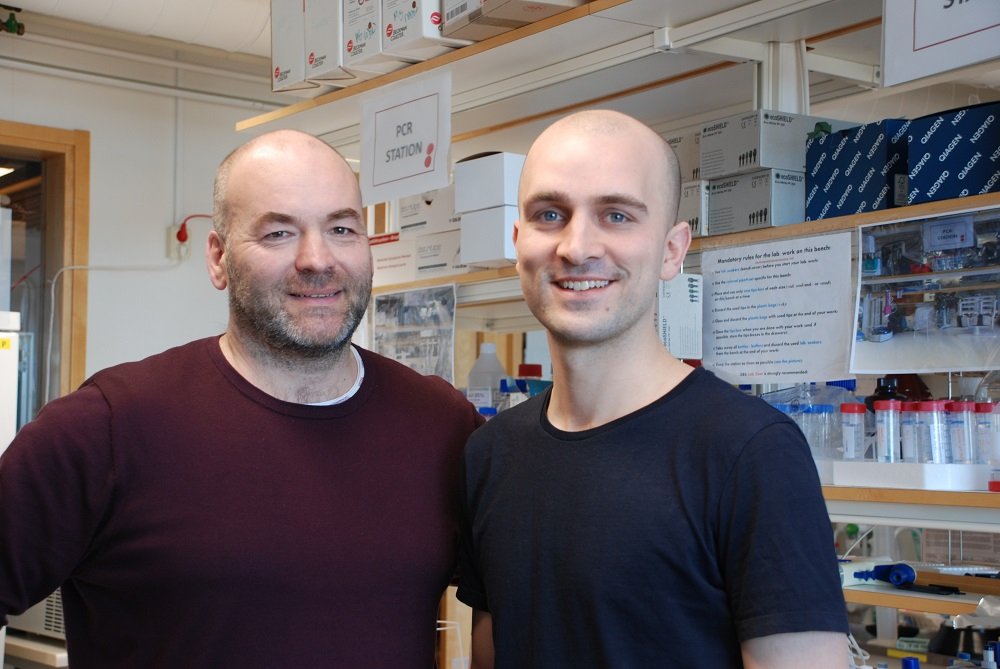Researchers hope to be able to replace dysfunctional brain cells

A new study by researchers at Karolinska Institutet supports the theory that replacement of dysfunctional immune cells in the brain has therapeutic potential for neurodegenerative diseases like ALS and Alzheimer’s disease. The study, which involved repopulating the brain with new immune cells in an experimental disease model, is published in Nature Communications.
Macrophages are immune cells present throughout the body, and are specialised according to the organ in which they operate; in the brain they are known as microglia. In a healthy brain, microglia are involved in many caretaking functions that support the activities and health of nerve cells. In diseases like ALS and Alzheimer’s disease, microglia instead function to harm nerve cells.
New model of microglia depletion
The researchers behind the current study believe that replacement of the dysfunctional microglia with healthy cells will potentially be of therapeutic benefit in such neurodegenerative diseases. Therefore they have developed a new disease model in which the animal’s own microglia are removed from the central nervous system (CNS). This leads to a rapid influx of monocytes, precursors of macrophages, into the brain and spinal cord, giving rise to new microglia-like cells. Microglia in the brain, however, have a different embryonic origin to blood-borne monocytes.
“We knew that blood monocytes would infiltrate the CNS in our experimental mouse model, but we did not know to what degree they would adapt to the new microenvironment,” says first author Harald Lund, a recently graduated doctoral student at the Department of Clinical Neuroscience, Karolinska Institutet. “So we dissected the process of repopulation and fully characterised what happened to these cells with time.”
Nurture trumps nature
The infiltrating cells adapted to the ‘empty’ tissue but did not fully differentiate into microglia. However, the monocytes started to express many genes characteristic of microglia, adopted their morphology and exhibited similar functions to microglia. A meta-analysis of several recent studies of microglia repopulation further confirmed the gene signatures as being specific to infiltrating monocytes adapting to the CNS microenvironment, which goes against their nature. The apparent dominance of the tissue microenvironment in dictating cell functionality could be exploited therapeutically, the researchers believe. The study provides support for the researchers’ current projects aiming to develop novel immunotherapies for neurodegenerative diseases.
 “There are several incurable neurodegenerative diseases in humans, but a complete lack of efficient immunotherapies,” says Professor Bob Harris at the Center for Molecular Medicine, Karolinska University Hospital and the Department of Clinical Neuroscience, Karolinska Institutet. “We believe that efficient replacement of dysfunctional microglia has the potential to be an effective therapy, so understanding the molecular events and consequences of repopulation of a microglia-depleted CNS are critical in working towards this goal.”
“There are several incurable neurodegenerative diseases in humans, but a complete lack of efficient immunotherapies,” says Professor Bob Harris at the Center for Molecular Medicine, Karolinska University Hospital and the Department of Clinical Neuroscience, Karolinska Institutet. “We believe that efficient replacement of dysfunctional microglia has the potential to be an effective therapy, so understanding the molecular events and consequences of repopulation of a microglia-depleted CNS are critical in working towards this goal.”
The study was financed by the Swedish Alzheimer’s Foundation, the Swedish Research Council, the Margaretha af Ugglas Foundation, the Swedish Brain Foundation and Alltid Litt Sterkere.
Publication
“Competitive repopulation of an empty microglial niche yields functionally distinct subsets of microglia-like cells”
Harald Lund, Melanie Pieber, Roham Parsa, Jinming Han, David Grommisch, Ewoud Ewing, Lara Kular, Maria Needhamsen, Alexander Espinosa, Emma Nilsson, Anna K. Överby, Oleg Butovsky, Maja Jagodic, Xing-Mei Zhang & Robert A. Harris
Nature Communications, online 19 November 2018, doi: 10.1038/s41467-018-07295-7
